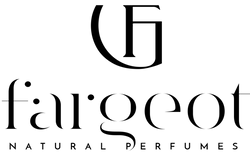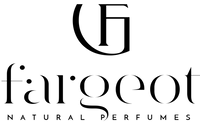How natural is your natural perfume?

Credit photo: mentatdgt
The natural/healthy lifestyle trend is only getting stronger and stronger. People want to live longer and better and who can blame them. In the age of the Internet, that opens the door to a flood of information which can be tricky to navigate. Here is an article we hope will help you understand what is a true natural perfume.
What does “natural” mean?
A natural product refers to a product that can be found in nature as opposed to synthetic products that are man-made. In the world of cosmetics, a natural product such as a natural perfume would be made of natural ingredients that are found in nature.
It is important to note that “natural” and “vegan” are not synonymous. A simple ingredient such as honey occurs in nature, making it natural. However, it is coming from an animal source and is therefore not vegan.
Similarly, some vegan foods can contain ingredients such as preservatives or artificial flavouring. Those are not derived from animal sources however they are man-made, meaning they can’t be classified as “natural”.
In Australia, the Food Standards Australia New Zealand (FSANZ) set out a code to regulate food labelling and strictly regulates nutrition content and health claims from products and manufacturers. However, claims about non-nutrient characteristics such as “natural” and products falling out of the food category are arguably not regulated by this code.
When a brand therefore claims that their product is “natural”, this is looked after by the Australian Consumer Laws administered by the ACCC, which states that labels should not be false, misleading or deceptive. However, the ACCC has also noted that what consumers and manufacturers see as “natural” could differ. The guidance is currently loose and unfortunately not tightly regulated. Consumers must therefore beware of products branded “natural” and be armed with knowledge to determine whether a product is in fact truly natural.
The most common non-natural ingredients you may find in perfumes
Phthalates
Phthalates are man-made chemicals mostly used in plastics to increase their flexibility and durability. In cosmetics, phthalates are typically used as solvents or binding agents. More particularly in perfumes, phthalates are used as a fixative to prolong the scent of the perfume onto the skin.
Phthalates are a group of chemicals so they usually won’t be listed as “phthalates” on a product label. The most common one for perfumes would be DEP (diethyl phthalate), used as a fixative.
See our blog about phthalates
Parabens
Paraben is a class of man-made chemical used as a preservative to prolong a product’s shelf life. Some perfumes may contain parabens to that effect.
See our blog about parabens
Fragrance
“Fragrance” is an ambiguous word. In common English, it is used almost interchangeably with words such as “scent”, “aroma” or even “perfume”. The question is “Is a fragrance natural?” And the answer is “it depends”
Fragrances are often synthetic, containing ingredients that have been chemically modified from their natural form or created from scratch mixing a few chemical elements. Fragrance can mimic a smell found in nature or design a new aroma altogether. The most used synthetic fragrance in perfumery may be musk as it is problematic to obtain in natural ways.
See our relevant blog posts here and here.
However, a fragrance can still be natural if it only uses ingredients from natural origins to create a new aroma.
How natural is your natural perfume? Some quick tips
With loose regulations around what can be called “natural”, consumers must be armed with knowledge to navigate their way towards products matching their requirements. Here are a few tips to help you spot how natural a perfume is.
Look at the ingredients list
This won’t unfortunately be available for all perfumes. Perfumers sometimes legally withhold information about their ingredients, fully or partially, to protect their intellectual property. This has been a sticking point for many consumers, especially since a scientific analysis of some major perfume brands’ products revealed the presence of harmful chemical ingredients, some even linked to cancer (more information here).
Thankfully, some perfumers choose to go the opposite and are fully transparent about what goes into their perfumes.
When ingredients are available for you to read, firstly you must understand whether this is the full list of ingredients or only a partial one. Then, beware of words indicating non-natural ingredients such as ingredients containing the words phthalate (such as diethyl phthalate or DEP) or paraben (such as methylparaben). Also beware of the word “fragrance” as this most likely indicates a synthetic fragrance.
Look at the colour
To create a scent naturally, perfumers will likely use essential oils. When mixed with the other ingredients, the natural perfume will take a yellow to brown tint from the oils. Synthetic fragrances are usually translucent, rendering the perfume using them translucent as well.

